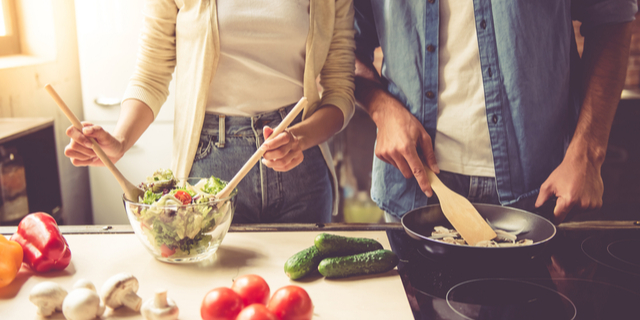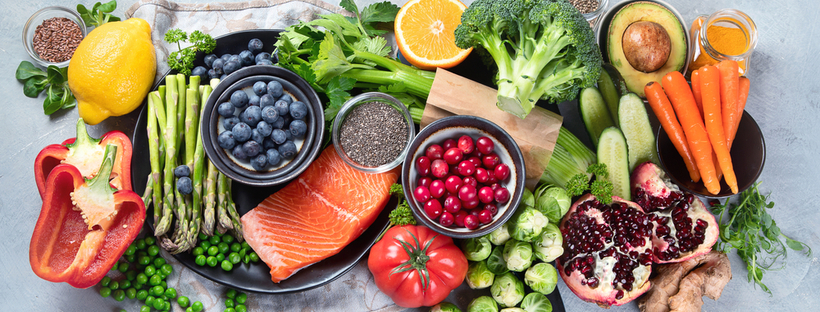.jpg)
The glycemic index (GI) is one of our favorite tools to assess the suitability of a particular food for someone’s diet. This is most relevant for someone who is trying to control their blood glucose levels, which can encompass a variety of situations.
Principles of Low-Glycemic Eating to Live By
GI is a tool that can provide us with an estimated idea of how big of a glucose spike a food will produce, which then comes with an accompanying insulin spike that can harm long-term health. Fortunately, there are some common threads between low GI foods, and we’ve compiled shortlists of foods that fit into these categories so you can see them at a glance.
Eating Non-Starchy Vegetables, Beans and Fruits
These are some of the best foods available to health-conscious people in general since they’re packed with nutrients and fiber. They also pull double duty as low glycemic index foods due to the lack of starch, which can help people struggling with weight control.
Examples
- Kidney beans
- Lentils
- Grapefruit
- Pear
- Broccoli
- Cauliflower
Enjoy Less-Processed Grains
Grains are a staple food in many breakfasts, so it’s even more important to get this one right. How your energy loading is done in the morning will affect your energy levels for most of the day, which will have a knock-on effect for the foods you will later crave and eat. If you are someone who consumes grains, then you want to focus on a whole grain version. The less processed a grain is, in general, the longer it will take to digest and the longer you will feel full.
Examples
- Steel cut oatmeal
- Quinoa
- Buckwheat
- Khorasan wheat
- Brown rice
Of course, not everyone tolerates grains well, particularly those that contain gluten. If this applies to you, then some grains without gluten like quinoa and buckwheat may be the best options to consider.

Limit Sweets (Even if Low on the GI)
Concentrated sweets are sugary products that are just about some of the least healthy foods you can find out there. Simple sugars like table sugar are absorbed rapidly into the blood from the gut, where they cause a sharp spike in blood glucose levels. This causes a spike in insulin levels, a hormone that transports glucose from the blood into cells. Repeatedly spiking insulin levels can lead to insulin resistance, associated with a variety of health problems. Although lower GI sweets are preferable to high GI sweets, both are basically a sugar bolus that will harm the body over time.
Examples
- Lollipops
- Caramel
- Gumballs
- Marshmallows
- Candies
- Icing
Stick to Eating Healthy Proteins
The key here is to stick to unprocessed proteins. Much like fruits and vegetables, the longer it takes to extract the nutrients from a protein source, the less extreme the spike in glucose. But in this context, we’re primarily concerned with added sugars in protein sources when they’ve been processed.
Examples
- Grass-fed beef
- Chicken
- Turkey
- Wild game
- Fatty fish
- Pasture-raised eggs

Consume Healthy Fats
Healthy fats are an essential part of a balanced diet; it’s a crucial detail that eating fats don’t make you fat – and a surprising amount of people continue to believe this even to this day. Healthy fats help regulate blood glucose levels by making sources of glucose digest more slowly, releasing their sugar into the blood over a more extended period.
Examples
- Avocados
- Olive oil
- Salmon
- Olives
- Walnuts
- Peanuts
Try Sticking to 3 Meals Per Day (An Occasional Snack is Fine)
If you eat a smaller number of meals, but those meals contain whole foods, including vegetables, proteins, and some starches, it should keep you from needing to snack throughout the day. There’s a metabolic component here: combining starches with foods that are slower to digest will mean the sugar is released more slowly into the blood, as mentioned above. But there’s also a behavioral component; it’s simply easier to track the food you eat when it’s done less frequently, and you will be less prone to topping up energy levels as they start to dip, which can make you feel hungrier and lead to more frequent glucose spikes.

Importance of Combining Low Glycemic Index Carbohydrates with a Protein or Fat
Eating protein and starch together will result in a lower glucose spike since the starchy food isn’t digested by itself. In other words, making it take longer to digest the starch is precisely why you should eat protein and starch together. If you’re eating a potato, for example, the effort of extracting the sugars from the potato when mixed with some chicken will mean that the resulting blood glucose spike is smaller and slower. The name of the game is avoiding blood sugar spikes.
Examples of Low Glycemic Index Food Combinations with Healthy Proteins
- Chicken and Brown Rice
- Turkey in Tomato Sauce
- Venison and Shallots
Examples of Low Glycemic Index Food Combinations with Healthy Fats
- Full-Fat Greek Yogurt and Berries
- Steel-cut Oatmeal with Flaxseed and Grass-Fed Butter
- Apple with Almond Butter

